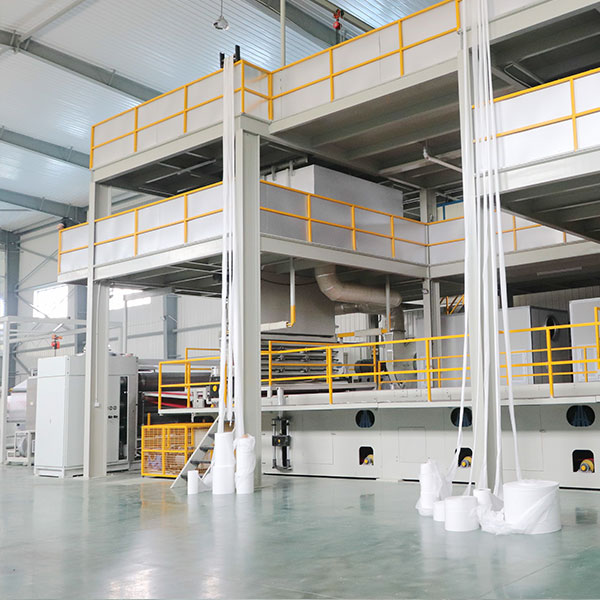The Nonwoven SS machine , with its innovative double-beam design, stands out as a game-changer in the industry. But what makes this technology so special? Let’s dive into the intricacies of its engineering design and explore how it achieves unparalleled fabric uniformity while surpassing single-beam systems in performance.
At the heart of the double-beam design lies a sophisticated mechanism that ensures consistent filament distribution across the entire width of the fabric. Unlike traditional single-beam systems, which often struggle with uneven fiber alignment, especially at higher speeds, the double-beam configuration divides the workload between two parallel beams. This not only enhances precision but also reduces stress on individual components, resulting in smoother operation and fewer interruptions. For manufacturers aiming to produce lightweight fabrics like hygiene products or heavier materials such as geotextiles, this level of control is invaluable. By leveraging advanced airflow dynamics and temperature regulation within the spinning process, the machine guarantees that every square meter of fabric meets exact specifications—whether you’re targeting 9 GSM for delicate wipes or 100 GSM for robust industrial applications.
But achieving superior fabric uniformity isn’t just about hardware; software integration plays an equally critical role. Modern versions of these machines are equipped with real-time monitoring systems that allow operators to fine-tune parameters such as filament denier and bonding strength. These adjustments ensure that even when switching between different raw materials or fabric weights, the output remains consistent. For instance, polypropylene granules—a staple in nonwoven production—are processed with remarkable efficiency thanks to the machine's ability to adapt to varying polymer viscosities. This flexibility is particularly beneficial for businesses looking to diversify their product range without investing in additional machinery.

Another standout feature of the Nonwoven SS machine is its scalability. Whether you’re running a small-scale operation or managing a large factory, the double-beam system can be customized to fit your needs. Manufacturers appreciate the balance between speed (up to 350 meters per minute) and quality, ensuring that increased productivity doesn’t come at the expense of fabric integrity. Moreover, the modular nature of the design allows for future upgrades, making it a future-proof investment for companies eyeing long-term growth.
Of course, no discussion about engineering excellence would be complete without mentioning sustainability. As industries worldwide shift toward greener practices, the Nonwoven SS machine aligns perfectly with this trend. Its energy-efficient motors and optimized heating systems reduce power consumption significantly compared to older models. Additionally, the precise control over raw material usage minimizes waste, contributing to a smaller environmental footprint. For eco-conscious businesses, this combination of innovation and responsibility makes the machine an attractive choice.
The brilliance of the Nonwoven SS machine lies in its ability to merge cutting-edge engineering with practical functionality. From its groundbreaking double-beam architecture to its adaptability across diverse applications, this equipment sets a new standard for spunbond nonwoven fabric production. If you’re ready to elevate your manufacturing capabilities, investing in a machine that prioritizes precision, efficiency, and sustainability is undoubtedly the way forward. After all, in today’s competitive market, staying ahead means embracing technology that delivers both quality and versatility—and the Nonwoven SS machine does exactly that.







 English
English 中文简体
中文简体 русский
русский عربى
عربى





